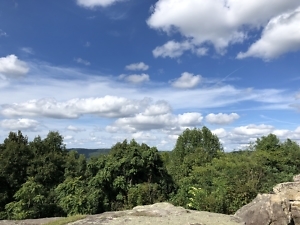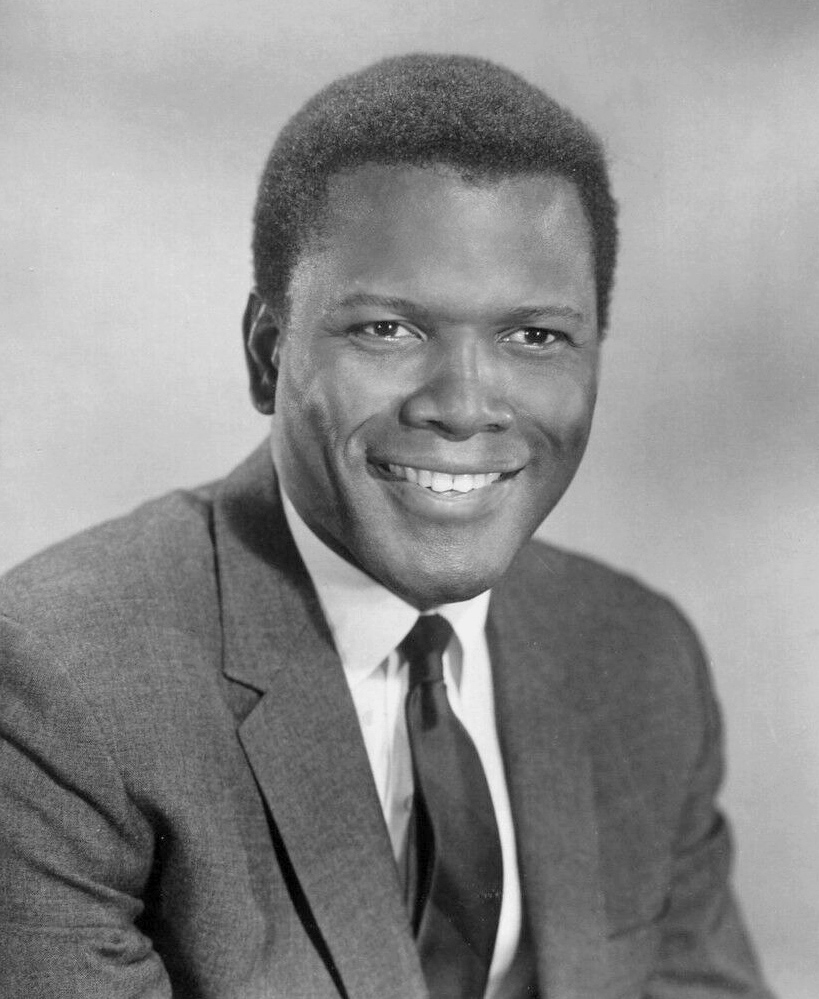Minding the Metaphors
Walking a labyrinth for the first time taught me to trust the path
As I walked a labyrinth for the first time, I discovered a world of meaning so intense that I struggled to remember all I was seeing. Eventually I had to let go and hope that anything I needed to recall would come back to me. When I finally staggered out twenty minutes later, drunk with metaphor and high on peace, every bush I beheld was burning, every puddle brimming with holy water. “The world is charged with the grandeur of God,” said Gerard Manley Hopkins. I believe I may have passed him on the path.
 I had been looking for an affordable writing retreat, and this one seemed perfect. It was called “A Labyrinth Journey: Connecting with Your Creativity through Walking and Writing,” and it would be held at St. Mary’s Sewanee, just an hour from my home. I had visited the retreat center once before and found the accommodations comfortable and, most importantly, the food delicious. The labyrinth aspect was a bonus, but I gave it little thought. The church where I work had recently installed one and I supposed it might be nice to learn what it was all about.
I had been looking for an affordable writing retreat, and this one seemed perfect. It was called “A Labyrinth Journey: Connecting with Your Creativity through Walking and Writing,” and it would be held at St. Mary’s Sewanee, just an hour from my home. I had visited the retreat center once before and found the accommodations comfortable and, most importantly, the food delicious. The labyrinth aspect was a bonus, but I gave it little thought. The church where I work had recently installed one and I supposed it might be nice to learn what it was all about.
The retreat weekend arrived with perfect early fall weather. Picture a breathtaking setting atop a mountain in Sewanee, with towering trees of all kinds, the sounds of birdsong and crickets, sun-soaked wildflowers sprinkled among huge limestone outcroppings, bright butterflies whirling around, and an incredible view of the distant ridges and the valley below. Back home in Chattanooga, we had just endured more than a week of heavy rain, some positively torrential, that had infiltrated my basement and elevated my stress level. But on the mountain, rain had given way to enormous puffy white clouds and an impossibly blue sky.
 The labyrinth itself was innocuous enough in appearance—a flat, mostly gravel path set between red bricks turned on their sides to form a border. The design followed the classic medieval model: a center circle surrounded by eleven lanes, or “circuits,” that doubled back upon themselves in a swirling pattern, reminiscent of the famous installation at Chartres Cathedral in France. A light breeze blew around the scent of pinesap, and pine cones littered the ground. Rough lichen-covered stone benches surrounded the circle. A small Zen garden stood off to one side.
The labyrinth itself was innocuous enough in appearance—a flat, mostly gravel path set between red bricks turned on their sides to form a border. The design followed the classic medieval model: a center circle surrounded by eleven lanes, or “circuits,” that doubled back upon themselves in a swirling pattern, reminiscent of the famous installation at Chartres Cathedral in France. A light breeze blew around the scent of pinesap, and pine cones littered the ground. Rough lichen-covered stone benches surrounded the circle. A small Zen garden stood off to one side.
At the morning session, our presenters spoke about the labyrinth as both a creative and a spiritual tool. They suggested we pay attention to whatever we experienced while walking and directed us to examine our experiences in terms of metaphor. They said to approach the entrance with gratitude, quiet our breathing, and use the labyrinth to ask a question, seek clarity for a problem, or just remain open to whatever came. They urged us to “trust the path.”
To help us focus, we were invited to write a word of our choice on a smooth river rock and carry it with us. Just before our first walk, I found myself in tears as one presenter described how the practice had changed her life. She used words like “powerful” and “transformative.” My reaction surprised and embarrassed me. I started to think this might not be a good idea. Perhaps I should stay away from such a spooky and unpredictable spiritual practice before I humiliated myself further.
 Then I remembered how my past experiences of the divine had frequently caused me to suspect that God was laughing—or at least winking—at me. (When it comes to tricks, Anansi has nothing on the Almighty.) My intention had been to attend a writing retreat, but I suddenly had the feeling that I was actually there to attend a labyrinth retreat. It seemed ungrateful to resist, so I chose a rock and the word “Pain.” It had been five years since my divorce, yet I was still haunted by the emotional fallout. Uncertain of beginning, I sat with my Pain for a few minutes while I watched others begin to walk the labyrinth. I calmed my breathing and awaited my moment to enter this ancient, transformative metaphor machine.
Then I remembered how my past experiences of the divine had frequently caused me to suspect that God was laughing—or at least winking—at me. (When it comes to tricks, Anansi has nothing on the Almighty.) My intention had been to attend a writing retreat, but I suddenly had the feeling that I was actually there to attend a labyrinth retreat. It seemed ungrateful to resist, so I chose a rock and the word “Pain.” It had been five years since my divorce, yet I was still haunted by the emotional fallout. Uncertain of beginning, I sat with my Pain for a few minutes while I watched others begin to walk the labyrinth. I calmed my breathing and awaited my moment to enter this ancient, transformative metaphor machine.
First, I noticed the path itself. It was only about 12 inches wide and I found it easy to lose my balance if I looked away. To continue to move toward my objective, I had to keep my eyes on the terrain at my feet, which was sometimes barren, sometimes sprigged with small green plants, sometimes muddy or filled with stones or nuts that had fallen from the overhanging trees. My passage was smoother if I watched my step. Curiously, I saw that every so often along the way, a previous walker had incised a small cross in the middle of the path.
Time felt suspended. I began to think I might never reach the center. I came close many times, only to find myself immediately thrown back out into the furthest circuit. My choice was to persevere or cheat, and cheating at a spiritual practice seemed like a bad idea, so I kept walking. I tried to trust the path and not second-guess myself.
 It was interesting to undertake such an interior journey within a group. Some people I followed, and some followed me. After a while, I frequently confronted other walkers face-to-face. It was jarring the first time it happened. I briefly thought I had made a wrong turn; then I realized that this person had already reached the center and was on her way to the exit. In contrast to a maze, the way into a labyrinth is also the way out. After a moment to process this, we easily made room for each other by momentarily stepping into an adjoining circuit. This was all done in silence and with little eye contact, in respect for the privacy of the path. After a while it almost felt like we were dancing.
It was interesting to undertake such an interior journey within a group. Some people I followed, and some followed me. After a while, I frequently confronted other walkers face-to-face. It was jarring the first time it happened. I briefly thought I had made a wrong turn; then I realized that this person had already reached the center and was on her way to the exit. In contrast to a maze, the way into a labyrinth is also the way out. After a moment to process this, we easily made room for each other by momentarily stepping into an adjoining circuit. This was all done in silence and with little eye contact, in respect for the privacy of the path. After a while it almost felt like we were dancing.
Occasionally I stopped, both to put more distance between myself and the person just ahead of me and, sometimes, only to look and listen and be. As I walked, I carried my stone. Most of the other participants deposited theirs in the center before heading back out, but our presenters had taken pains to assure us that there was no wrong way to walk the labyrinth, so I felt free to make a different choice. I tried to imagine what I hoped my pain would transform into. I thought of forgiveness, then acceptance. Finally, I thought of Peace. When I reached the center, I flipped my rock over in my hand and, after a moment to give thanks for both how far I had come and how far I had yet to go, I carried it out again, Pain-side down.
As the gravel crunched beneath my feet, I noticed the play of sunshine and shadow. No matter whether I walked through the light or the darkness, I clearly remained on the path. At times it extended only a few feet in front of me before abruptly turning back in the opposite direction. At other times, it extended farther than I could easily see. I learned it was best not to look too far ahead, as it made me dizzy and prone to wobble. I rarely felt that I was making much headway, until I rounded a corner and the labyrinth unceremoniously deposited me at the exit. This small journey was ended. I wrote my new word on the blank side of my rock—a literal touchstone to remind me of my first labyrinth experience—and stumbled off to collect my thoughts and apply them to the greater journey.
In The Sacred Path Companion, Lauren Artress writes, “The labyrinth is an archetypal pattern. The circle is a universal form, found in every culture in the world. It communicates unity and wholeness. Contained within this circle is a complex spiral that, as you walk it, takes you deeper into your center. The literal becomes figurative, and the figurative becomes literal. The literal path of the labyrinth … becomes the Path of Life.”
In the end, the lesson I took from the labyrinth was almost too simple, as all the best lessons no doubt are: if I pay attention and follow the path set before me, it will lead me where I need to go. All I have to do is keep walking. I feel lucky to have been gifted this experience (even if God did trick me), lucky to have had such excellent guides, lucky to have been in a small group that felt like a safe space within which to explore this mystery, and lucky to still be here in this surprising world, on this shining mountain, walking my Pain into Peace, trusting the path, and minding the metaphors.

Copyright (c) 2019 by Tina Chambers. All rights reserved. A graduate of Auburn University, Tina Chambers has worked as a technical editor at an engineering firm and as an editorial assistant at Peachtree Publishers, where she worked on books by Erskine Caldwell, Will Campbell, and Ferrol Sams, to name a few. She lives in Chattanooga.

